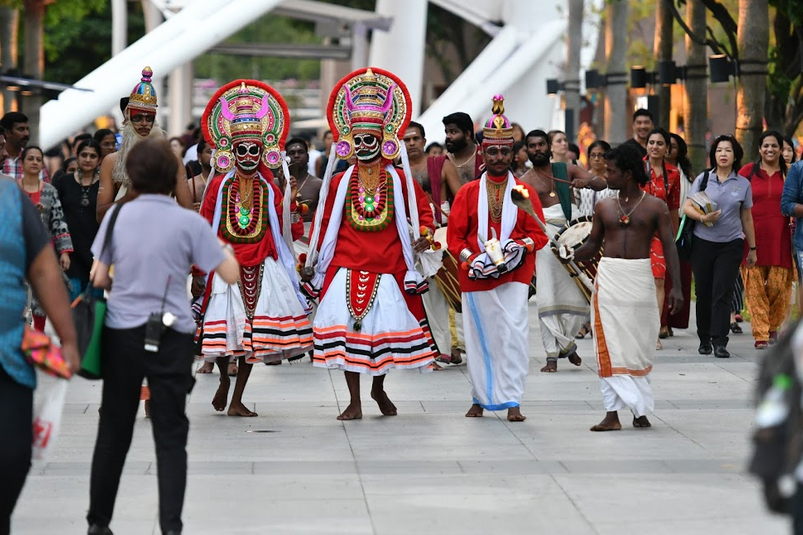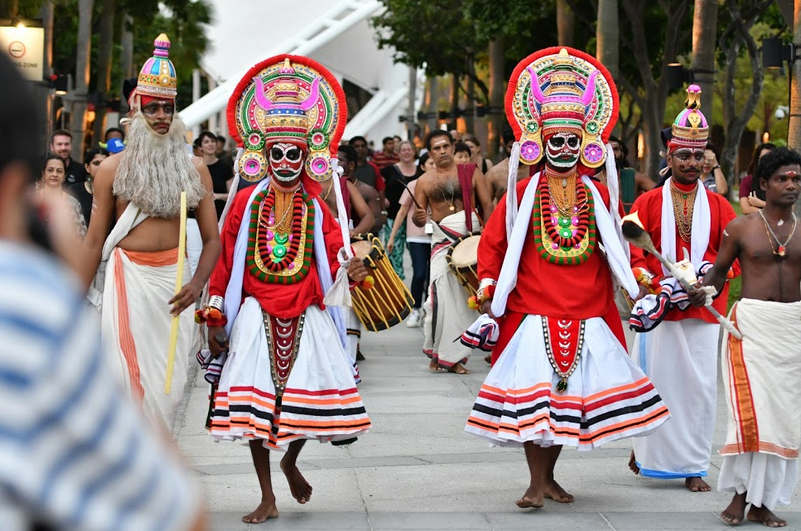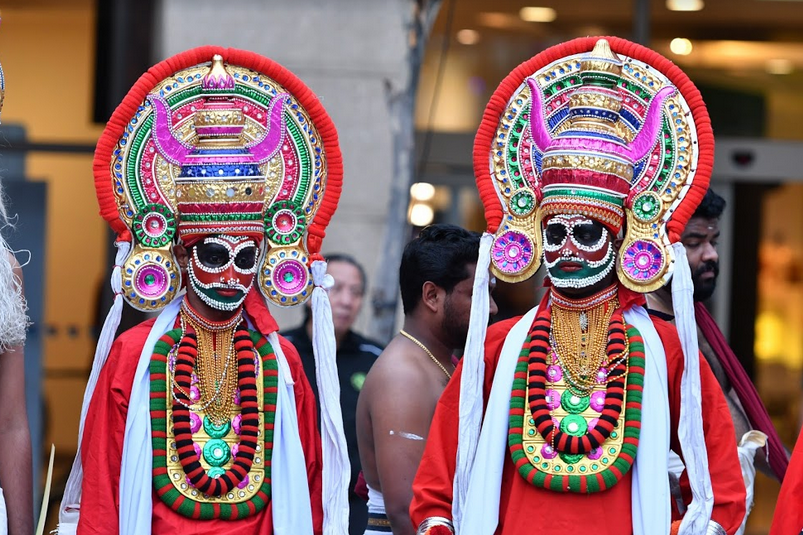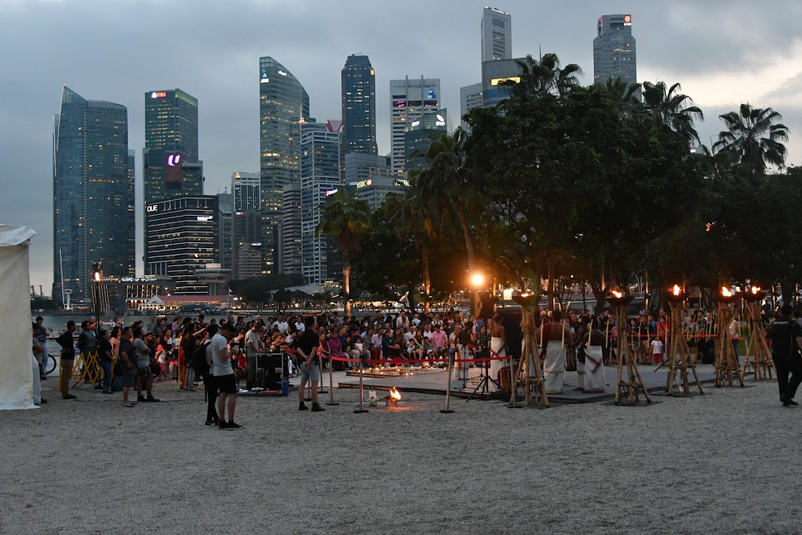Mudiyettu, the rarely seen ritual theatre is being performed at Kalaa Utsavam by Mudiyettu Sangham Keezhillam in three segments over the first weekend at 6.45pm & 8.15pm at Esplanade Edge. This art form is the second from Kerala to be placed on UNESCO's Representative List of the Intangible Cultural Heritage of Humanity. The other art form on the list from Kerela is Koodiyattam, which will be performed on 19th November at 6pm at the Esplanade Annexe Studio.
Mudiyettu is a traditional ritual theatre and folk dance drama from the Indian State of Kerala. Photo courtesy: IndieStrings
It enacts the battle between goddess Kali and the demon Darika. Photo: Connected to India
It is a community performance that involves the cooperation and participation of the whole village. Photo courtesy: IndieStrings
Mudiyettu performances are held at Kali temples called bhagavati kuvus on the shores of the Chalakkury and Muvattupuzha rivers, at open theatres. They are held between February and May after the harvest season. Photo: Connected to India
Mudi refers to the headgear of Kali, made of wood or metal. It depicts her terror inspiring face and wild hair. In a ritualistic setting, the mudi is donned by the actor playing the role of Kali at the temple. Photo: IndieStrings
Instruments played during the ritual include veekku chenda (percussion and base), uruttuchenda (percussion), ilathaalam (cymbal) and the optional chengila (cymbal) Photo: Connected to India
Dancers purify themselves beforehand through prayer and fasting, before invoking the goddess by means of drawing an image of her (known as kalam) on the temple floor, thereby preparing the ground. The performance can last from a week to upto 41 days. Photo courtsey: IndieStrings.









